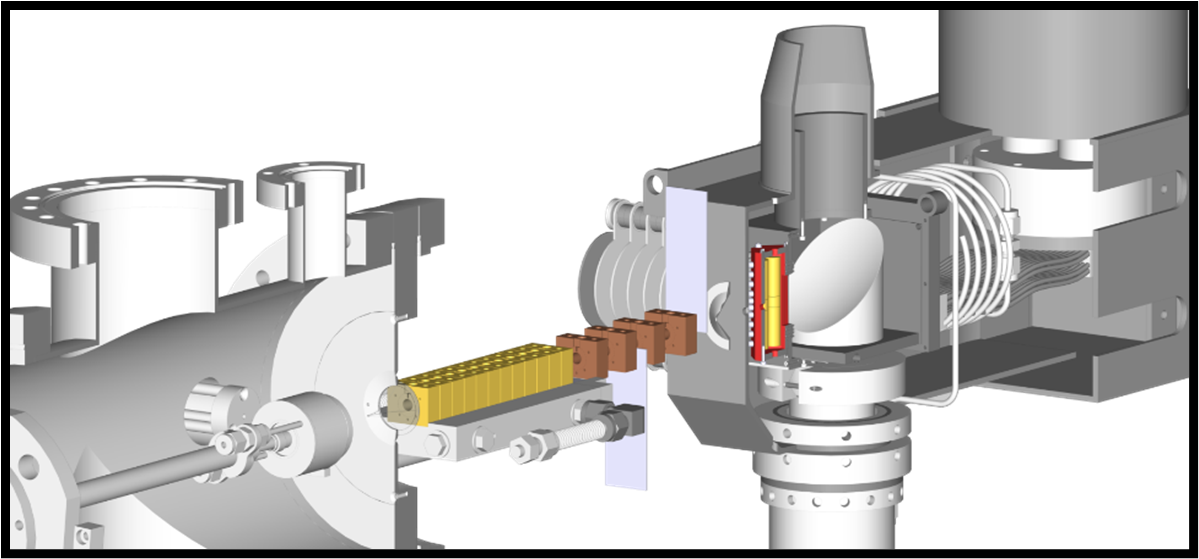Brianna Heazlewood (University of Liverpool)
Controlling the properties of ions and radicals at low temperatures
It is challenging to study gas-phase reactions between ions and radicals at low temperatures, and with control over all of the reaction parameters. I will present our approach for generating beams of velocity- and state-selected radicals with tuneable properties using magnetic fields [1-2]. While our approach was initially developed to produce slow H-atom beams, we show that the same principles can also be applied to generate filtered beams of molecular radical species (including O2 and OH).
Recently, we have physically combined our radical beam source with a cryogenic ion trap, with the goal of studying ion–radical reactions under cold and controlled conditions (see Figure 1). Reactions will take place within Coulomb crystals, enabling us to monitor the reaction processes with exceptional sensitivity (down to the single-ion level) [3-4]. The advantages of studying reactions within a Coulomb crystal environment will be discussed, and a new imaging method that enables spatial and temporal detection of ions will be presented [5]. Finally, I will mention some potential broader applications of our methods, including the exploration of new research directions and collaborative projects.
 Figure 1: Schematic illustration of the combined radical beam and cryogenic ion trap apparatus.
Figure 1: Schematic illustration of the combined radical beam and cryogenic ion trap apparatus.
References:
[1] J. Toscano et al., 174201, 149, J. Chem. Phys., (2018).
[2] C. Miossec et al., 104202, 153, J. Chem. Phys., (2020).
[3] A. Tsikritea et al., 10005, 12, Chem. Sci., (2021).
[4] C. Miossec et al., 033201, 93, Rev. Sci. Instrum., (2022).
[5] J. A. Diprose et al., 3900, 128, J. Phys. Chem. A, (2024).